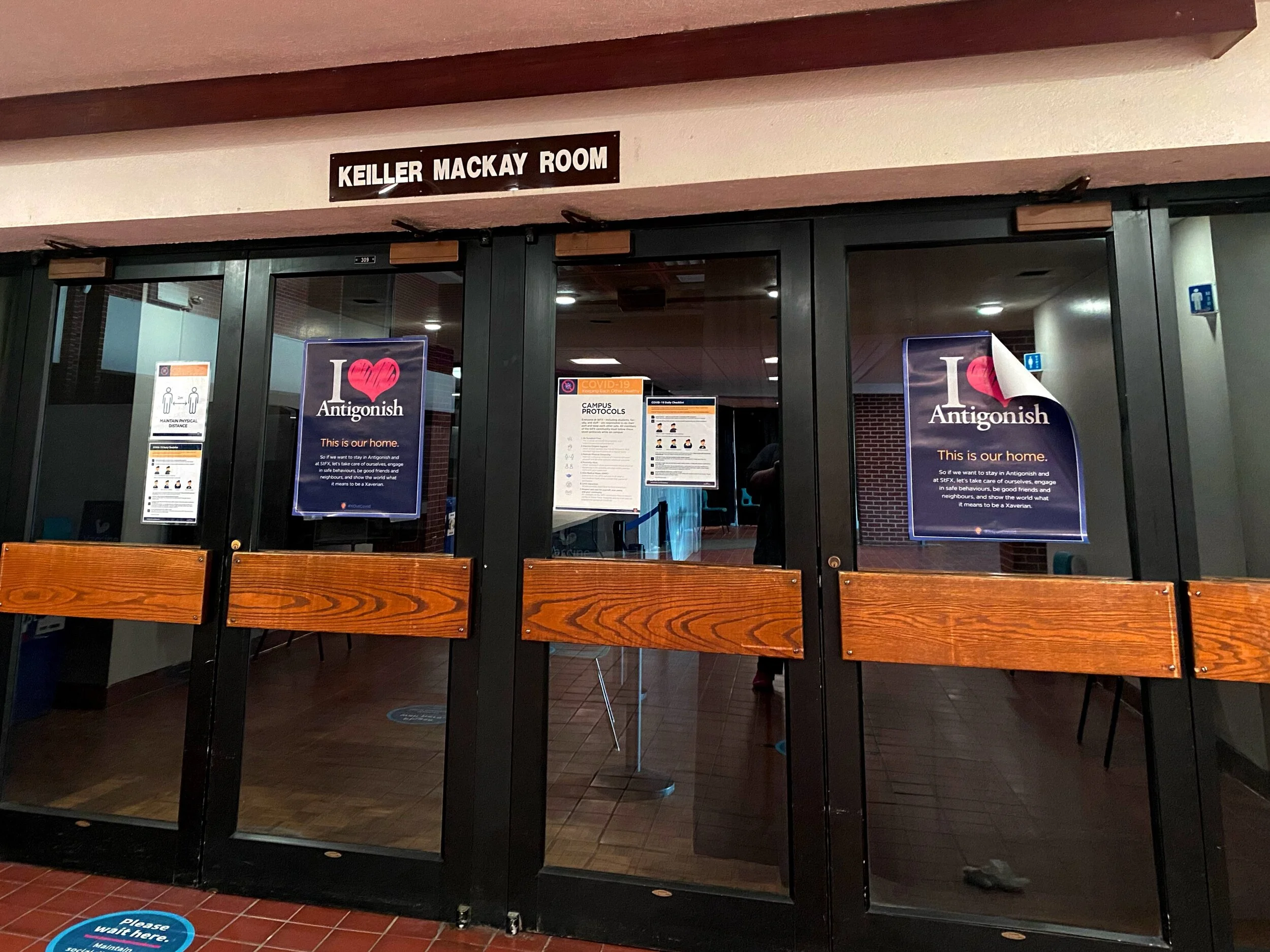Medieval Symbols, Religious Texts and Responses to Black Success
/Contextualizing White Supremacy
On the evening of Tuesday, February 27, StFX students, faculty, and community members, gathered in the Schwartz building to participate in the third contextualizing lecture of the school year. The lecture series, hosted by the StFX History Department, invites panelists to discuss and contextualize current issues. The series draws on historical narratives and how they continue to shape and be in conversation with modern issues and topics today.
The third lecture, that myself and many others were privy to on Tuesday night, worked to critically contextualize white supremacy. White supremacy describes the dominance and power that white people have held over other races throughout history. Although all white people benefit from white privilege to some degree, not all white people are white supremacists. Those who self-identify specifically as white supremacists, however, believe that white people are inherently superior to people of colour and therefore should continue to dominate society. In the wake of the massacre that took place in a Florida high school last month, that was initiated by a young man who had ties with neo-nazi groups, as well as the debate that was sparked locally about the removal of the Cornwallis statue in Halifax, the lecture came in a very timely manner.
The lecture was hosted by history professor Chris Frazer, who welcomed panelists Dr. Robert Zecker, who has been teaching in the Department of History since 2002; Dr. Ronald Charles who works in the Department of Religious Studies; and Dr. Donna Trembinski, who focuses her research and teaching in medieval history.
Each panelist had a unique and tremendously important perspective to bring to the discussion of white supremacy. Dr. Trembinski discussed how and why medieval symbolism is being used by white supremacists, like the symbols present at the Charlottesville riots that occurred in August. She indicated that the presence of these symbols shook her department nationally and they have since been working to deconstruct the ways in which the teaching of Medieval Studies works to perpetuate white supremacy.
Dr. Trembinski discussed how often times the narratives of people of colour are ignored or silenced in the study. Many prominent figures in the medieval era were, in fact, people with African backgrounds but their existence as people of colour are either hidden or white washed by historians. She explained that the medieval world was not homogeneously white and Christian and the fact that it appears as such shows the inherent racism of the teaching of Medieval History in general. Dr. Trembinski reminds us that the past must intersect with the present and commits that herself and other educators are working to change racist narratives and promote the truth of these histories in order to combat the perpetuation of white supremacy in our modern world.
Dr. Charles followed by discussing racism and white supremacy in religious, particularly Christian, thought. He points to the story of the curse of Ham that appears in Genesis in the Bible and how it is often used to perpetuate ideas about black inferiority. Some believe that this story promotes the idea that blackness is a curse and black people are meant to be enslaved. Dr. Charles points out that this narrative, along with many other white, Christian stories were and continually are, used by white people to undermine the rights and equal existence of black people.
The panelists explained that white supremacy, Christianity and colonialism are all inherently and historically linked because we teach our history from the top down. We do not inquire about the experiences and histories of marginalized groups and we continue to neglect to do so. Dr. Charles explained that some Christians continually use the Bible and religion to justify acts of racism and the perpetuation of white supremacy. The narratives in the Bible of superiority and domination continue to shape the ways in which we interact with those who are different from ourselves. Dr. Charles reminds us that while we may accept certain aspects of religious texts, we must reject problematic aspects and that we must continue to think critically about what we read if we wish to deconstruct systems that allow some to succeed on the backs of others.
Dr. Zecker looked to White Supremacy in U.S. history and reminded us of all the times that we thought we had made progress just to find out that racism still indeed thrives in our societies. The narratives that promote racism as yesterday’s news do not allow us to critically analyze the moment we currently find ourselves in and respond to issues in the right context. Dr. Zecker points out that, in this day and age, we are continuing to accept and legitimize white terrorism that we have seen acted on in recent events. He also points to an interesting pattern wherein after moments of black success, the United States has continually seen a rise of racist groups.
In Dr. Zecker’s perspective, the Trump administration is helping to normalize and allow for white supremacist groups to be legitimate. Black achievement, Zecker highlights, has always been a threat to white dominance and supremacy and we thus must not equate black success to the deterioration of racism because they often go hand-in-hand. The presence and glorification of statues of men who have committed heinous and racist crimes and the “debate” over whether to remove them shows that we do still have a long way to go in dealing with racist histories in order to promote more tolerance and respect into the future.
The discussion that ensued after the panel was very powerful and interesting. Those present worked to put white supremacy into a Canadian context and discuss the issues faced by black people and indigenous people in our country as well as those who continue to allow racism to exist and make up so much of our Canadian narrative today. The panelists worked with listeners to suggest ways to combat white supremacy in our day to day lives by centering the stories and ideas around those who are marginalized and promoting the power and leadership of people of colour. The existence of these difficult but candid discussions is also a step in this direction.
This is the final contextualizing lecture of the year but there are many events occurring this week for International Women’s Week that will also be working to spark progressive and activist conversation on campus. For more information, please be sure to seek out the Women’s Week Facebook pages.















